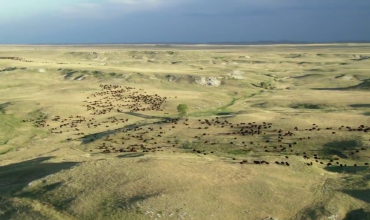-
or
Move to the previous cue
-
or
Move to the next cue
-
or
Increase size of captions
-
or
Decrease size of captions
-
or
Translate current cue
Plot summary
Marine invertebrates, the descendants of one billion years of evolutionary history, are the most abundant creatures in the ocean. In the Gulf of California, packs of Humboldt squid make night-time raids from the deep to co-operatively hunt sardines. Beneath the permanent Antarctic sea ice of McMurdo Sound, sea urchins, red sea stars and nemertean worms are filmed scavenging on a Weddell seal pup carcass. A fried egg jellyfish hunts amongst a swarm of Aurelia in the open ocean, spearing its prey with harpoon-like tentacles. In the shallows off South Australia, hundreds of thousands of spider crabs gather annually to moult. Many invertebrates have simple nervous systems, but giant cuttlefish have large brains and complex mating habits. Large males use flashing stroboscopic colours and strength to win a mate, whereas smaller rivals rely on deceit: both tactics are successful. A giant Pacific octopus sacrifices her life to tend her single clutch of eggs for six months when she gets old. As a Pycnopodia starfish feeds on her remains, it comes under attack from a king crab. Coral reefs, which rival rainforests in their diversity, are the largest living structures on Earth and are created by coral polyps. Porcelain crabs, boxer crabs and orangutan crabs are shown to illustrate the many specialised ways of catching food on a reef. Marine invertebrates have a lasting legacy on land too – their shells formed the chalk and limestone deposits of Eurasia and the Americas. Life on Location documents the recording of Antarctic sea life and the birth of a reef.

